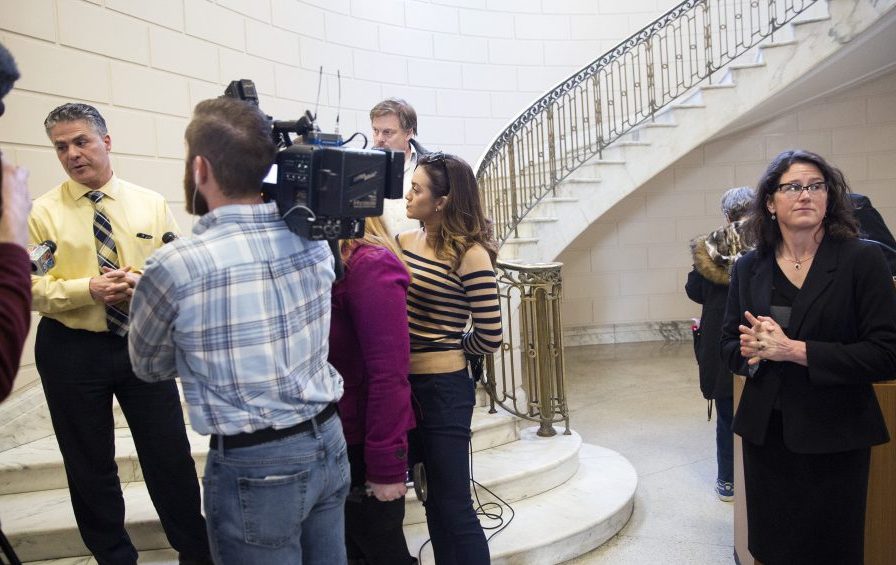Some good news emerged in Portland this week: Police officers will start wearing body cameras when they are out on patrol.
There is a plan to start a pilot program later this year, and there is money earmarked to pay for full implementation beginning in 2018.
There are a few hurdles which need to be cleared first: The policy behind the camera’s use is a subject of collective bargaining with the unions representing the city’s police, and there is some question about whether the city will have permission to use federal grant funds for the initial implementation.
But there is unanimous agreement among the mayor, City Council, city manager and police chief that the program should go forward, and there is no indication that anything will get in the way of the orderly introduction of a sensible policy that will serve the public and police officers by making their work more transparent.
That’s the good news. There was also a lot of bad news this week, too, generated by Mayor Ethan Strimling and his dysfunctional relationship with both city staff and his colleagues on the council.
The mayor managed to make broad agreement on goals and methods look like a battle royale. It would have been comical if it were not so serious.
It began with the death of a young African-American man, who had been reported to be screaming and aiming a rifle at passing cars in the St. John Street shopping plaza. According to police reports, an officer shot him dead when the man didn’t respond to instructions. He turned out to be armed with a pellet gun that he’d just bought at a local pawn shop.
The tragedy became the occasion for groups, including the ACLU of Maine, to remind the public about the desirability of police body cameras, even though there is no indication that an officer-mounted camera would have added to our understanding of this specific event.
Already volatile, the situation was inflamed when Strimling told the media that he agreed that the shooting brought a new sense of urgency to the need for body cameras, and the city should appropriate money to start the program right away. “We want to do it right, but I don’t think we can afford to wait any longer,” he said.
It might not have been the worst thing he could have said, but it gave weight to the notion that police were dragging their feet, maybe because they had something to hide.
That sparked an angry news conference Tuesday from Police Chief Michael Sauschuck, who said he was “disgusted” by the attempt to use a young man’s death to “drag the Portland Police Department into some national debate on the use of body cameras.”
Then on Wednesday, most of the City Council held a news conference, without the mayor’s participation, expressing their confidence in Sauschuck and making clear that the pilot program is still on track. Later that evening, Sauschuck was heckled by protesters who called him a murderer as a result of the shooting in the plaza.
From a distance, what happened this week looks like Portland is in the midst of a raging battle over excessive use of deadly force by police and the introduction of body cameras. But nothing could be farther from the truth.
There is no evidence that police officers did anything wrong at the scene. The matter is under investigation and there were numerous witnesses who can recount what happened.
And there is, in fact, no debate about the introduction of body cameras in Portland. By all accounts, there is unanimity among top leaders about what to do and when to do it.
Strimling knew, or should have known, all of this before he spoke up in the wake of a tragic death. If this is how he handles consensus, Portland will have more bad news ahead.
Send questions/comments to the editors.


